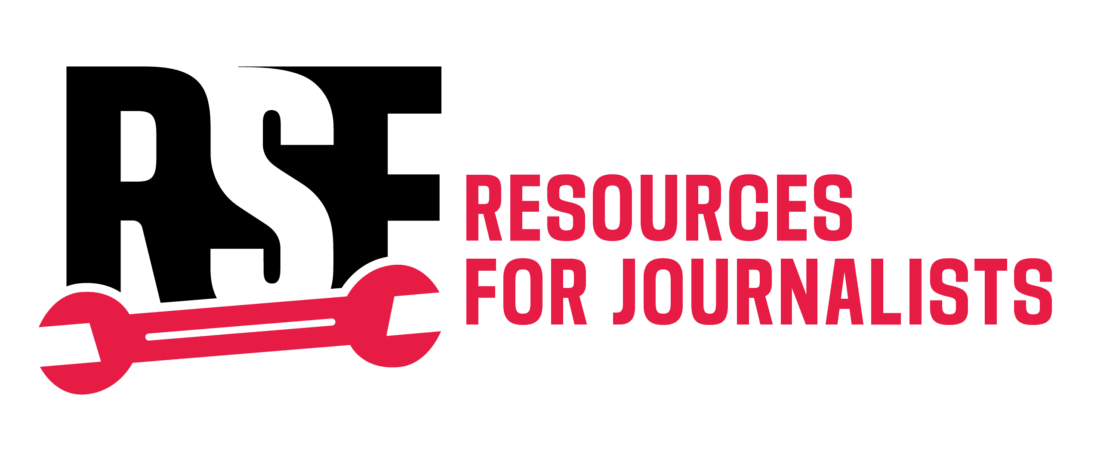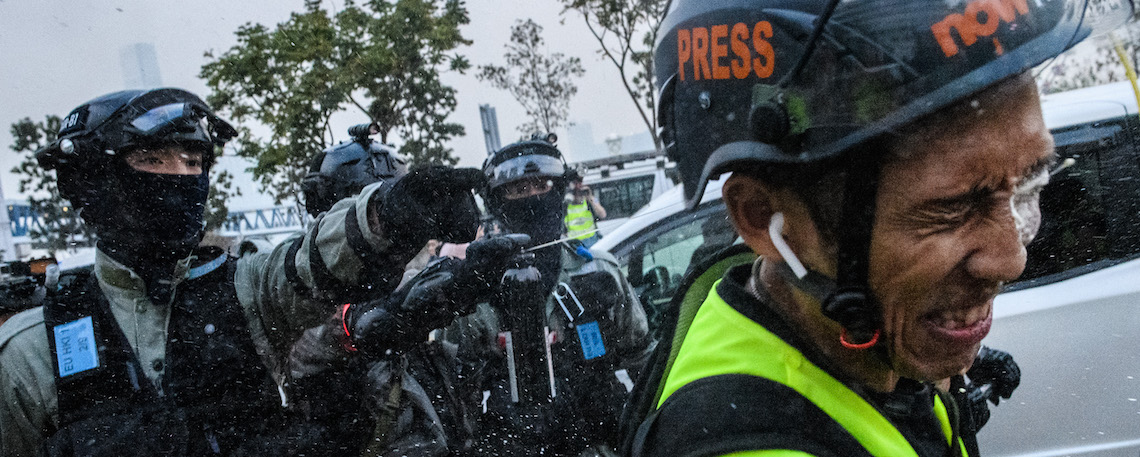Reporting on protests can be dangerous for journalists, who face various risks including assault and arrest. Reporters Without Borders (RSF) has compiled some tips for journalists to better prepare and mitigate the risks while covering these events.
In many places in the world, journalists covering protests are at risk of being pepper sprayed, physically assaulted and even sometimes detained alongside protesters. Not all demonstrations will escalate beyond a peaceful march, but journalists need to be ready for anything as these events can easily devolve into dangerous situations. While getting the story is important, ensuring one’s own safety as a journalist should be a paramount concern.
Preparation
- Don’t go alone. While attending a protest alone may give a journalist the advantage of lower visibility and easier movement, it also could put one in a vulnerable position if arrested or lost in the crowd. A journalist should always keep in regular contact with their newsroom and try to stay close with other team members. Whenever alone, it’s a good idea to look out for other journalists who may be in the same position.
- Make a map of the area. Use colours and names to label different “zones,” potential flashpoints and exit routes within the event area. This will make it easier to communicate with one’s team if lost or separated.
- Clothing. Wear two layers of loose-fitting cotton clothes to create pockets of air protecting skin from petrol bombs and other forms of heat exposure. Avoid dangly items such as scarves, necklaces and ponytails that can easily be grabbed or pulled. Wear sturdy, lace-up boots, possibly work boots that are often used on construction sites, in which one can comfortably run but will protect feet from sharp objects or heat exposure. Avoid wearing symbolic colours that could have you mistaken as a demonstrator or a detractor.
- Professional equipment. Always wear a “press armband” or other visual identification clothing. Also have your accreditation handy, but not immediately visible as it could be pulled or tugged. Some protesters and police may also target reporters. Make sure phone batteries are fully charged and carry a fully-charged external battery pack as a backup. Always bring extra memory cards for recording equipment.
- Physical safety equipment. Carry a helmet, goggles, and gas or respirator mask in case tear gas, rubber bullets or molotov cocktails are deployed on the scene. Also carry a first-aid kit including compresses and ointment for burns, and a simple velcro strap that can be used as a sling and a tourniquet in the event of a bleeding injury.
- Other useful supplies: Bring water, high-protein energy bars and toilet paper as in case one is out for longer than originally anticipated. Reserve an extra bottle of cold water to rinse the eyes and body in case tear gas is fired.
Digital security
- Use a VPN (virtual private network). If using mobile phone data or public WiFi, a user’s communication could be at risk of third party viewers from internet service providers. A VPN hides internet traffic in real-time by creating an encrypted tunnel for data to travel through, protecting a user’s identity.
- Consider using mesh messaging apps. Communicating online can become difficult in large crowds from weak phone signals, an easy solution is to use mesh messaging apps which utilises the phone’s built-in bluetooth antenna to send and receive off-the-grid messages while offline to other phones that are located in the vicinity and use the same software.
- Carry a clean burner phone in case a device is lost or taken away. If a device such as a mobile phone is lost or taken away by the police, assume that it will never be returned. If the device is returned, it should not be used as a precaution against potentially installed spyware.
Positioning
- Scope out the scene ahead of time. Positioning at a protest is important to one’s safety. It is advised to scope out the scene of the protest and locate a firm structure or piece of furniture attached to the ground, such as a pillar or park bench. This will act as a “sea break” in the middle of a crowd, where one can safely conduct interviews or film the action. If a crowd loses control, it will move around the object like a river while the journalist remains in one place.
- Stay on the outskirts of a crowd to avoid the risk of getting trampled. This also allows an easier escape. When pushing through a crowd, push at the hip line to get through easier.
- Conduct regular awareness checks. It is crucial to stay engaged with one’s surroundings while reporting at a protest. Pay attention to sounds and scenes; stay behind anyone firing rubber bullets or other objects. Regularly scope out potential exits and escape routes.
- Keep an eye on the crowd density. If one can see the nape of someone’s neck or buttons on their shirt, this is an indication that the crowd isn’t too dense. If the protesters’ chins are not visible anymore, this means the crowd has reached a critical density point after which people might become distressed and possibly panic.
Encountering law enforcement
- If subject to random stop and search, remember that early cooperation with the police is key. In many countries, police have the right to stop and search civilians without stated reasons and one may be required to produce personal and professional identification. At times an officer may also ask to look through personal items. In this situation, it is important to continue to be compliant and not argue.
- In the case of arrest, journalists must remember their right to silence. The police could use intimidation tactics and even torture to get individuals to talk in order to avoid opening an investigation.



